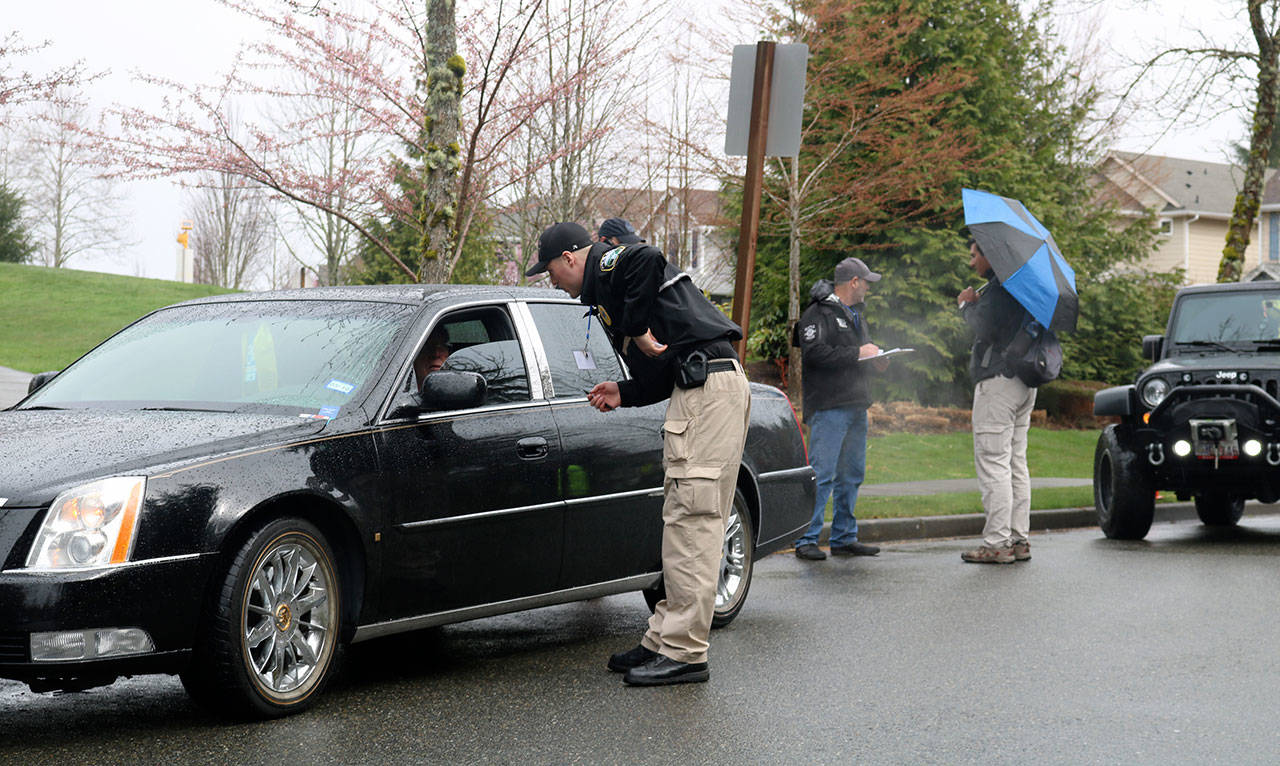More than 40 police officers hit the streets of Snoqualmie on Thursday, April 6, as part a training exercise that had them searching for a missing child. The mock child abduction was part of a week-long FBI program designed to give area officers the training they need to conduct abduction investigations as efficiently and effectively as possible.
Officers from 16 area agencies including Snoqualmie, Bellevue, Redmond, Seattle, King County and the FBI Seattle Office, participated in the program, which ran April 3 to 7. Washington is the 11th state to run this FBI training program.
The participating officers spent the first three days of the exercise at the Snoqualmie Fire Department in classroom training sessions, taught by the FBI National Child Abduction Rapid Deployment team and the FBI Behavioral Analysis Unit, before heading out for the practical work on Thursday. The classroom sessions covered topics such as behavior of child abductors, guidance on false allegations of child abduction and case management.
Real-world scenario
Ayn Dietrich-Williams, spokesperson for the Seattle FBI office, said the training program has been designed by combining elements of real-world child abductions to create a realistic simulation of a high-pressure investigation.
“When we designed the scenario we pulled in some of the challenges that come from all the different child abductions that we see nationally,” she said. “So they’ve learned the specialized techniques, but we want them to be able to implement them, so they can actually feel what it is like to do the things we have talked about.”
Dietrich-Williams explained that the script for Thursday’s events, the investigation of a 13-year-old girl gone missing, had officers investigate leads that turned out to be false to try to throw them off.
“Our investigators are going to practice… chasing down leads that turn out to be false. Maybe they find out there is a registered sex offender and they develop a profile thinking he might be the person and then it’s not,” she said.
Community involvement
As part of the training, the FBI and Snoqualmie Police Department reached out to local residents to be a part of the training as witnesses and interview subjects for the officers. Snoqualmie’s School Resource Officer Kim Stonebraker chose two students from Two Rivers School to play roles in the investigation, as well.
“We found that people were excited to participate because it’s a chance for them to learn more about the investigative process so if there is ever a real incident, they know how they can help. Also they want our investigators to be prepared as possible,” Dietrich-Williams said. “The teenagers who volunteer, we are hoping they get two things out of it. They learn about what it takes to be a good witness, so if they are ever a victim of crime they know that every detail matters. We also hope they get an awareness of some of the risks. They are learning what made this victim vulnerable.”
Working with the volunteer actors was a test for officers to focus their interviewing skills and ask the right questions. One important element, Dietrich-Williams said, was developing the skills to adjust the interview approach depending on the age of the subject. Interviewing minors presents different challenges to interviewing adults, she explained.
Agency cooperation
The Seattle FBI’s Assistant Special Agent in Charge Carlos Mojica spoke at a press briefing at the Snoqualmie Police Department, after the successful recovery of the missing girl in the exercise, about how the mock abduction was created.
“Some of the folks who created this scenario have been working these types of cases since 2004. A lot of the things, the way they played out, were played out for a reason because they are things that have actually happened before in actual cases,” Mojica said.
He thanked the Snoqualmie Fire and Police Departments for offering the space and hosting the agencies participating in the event. Snoqualmie Police Chief Perry Phipps also thanked the FBI for choosing to host their training in the city and for working with them to help improve, not just Snoqualmie officers, but also the officers in the many cities and counties that participated.
“The collaboration is apparent in both local state and agencies. They can work together in this kind of training scenario and exercise. They can come together for a common goal,” Phipps said. “To work toward learning how to effectively address and respond to a crime like this, which is something that I pray would never happen in this community, but I can tell you that if it does, we are going to be able to deal with it better than we would have without this training.”


